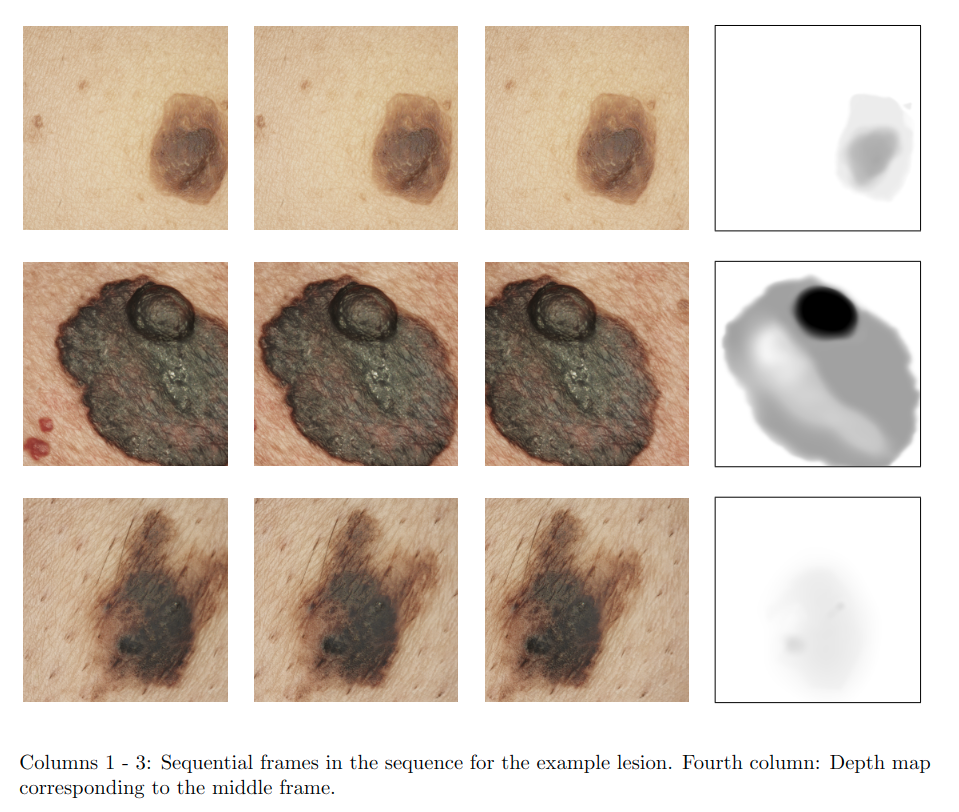Description
SkinDepth is the first synthetic 3D skin lesion database. The release of SkinDepth dataset intends to contribute to the development of algorithms for:
(1) skin lesion thickness prediction,
(2) skin lesion segmentation,
(3) skin lesion classification,
(4) singleimage/video depth estimation.
The advancement of medical imaging has ushered in a significant transformation across various medical disciplines, with dermatology being no exception. This progress has not only elevated the level of patient care but also played a pivotal role in enhancing the capabilities of healthcare practitioners. Central to this evolution have been databases and atlases containing meticulously classified and described skin abnormalities. These resources have not only bolstered the expertise of medical professionals but have also contributed to the automation of diagnostic processes. Furthermore, they have raised awareness among patients, directing attention to the presence of potentially life-threatening skin conditions, such as skin cancer.
Nevertheless, a critical gap has persisted in the field. A comprehensive database that combines high-quality images with corresponding depth maps has been conspicuously absent. This absence has acted as a bottleneck, impeding the progress of methods reliant on 3D reconstruction, including augmented reality visualization and automated medical procedures.
Addressing this gap was one of the principal objectives of this research work. The SkinDepth database, consisting of 2727 pairs of images and corresponding depth maps, was meticulously crafted to fill this void. These pairs were generated using 27 diverse models representing various types of skin lesions.
These models were created within the Blender software to ensure precision and quality, encompassing a wide range of sizes, shapes, and levels of convexity. Notably, out of the 27 models, 8 were either flat or nearly flat lesions.
For each of these created models, a total of 101 image-depth map pairs were generated, with the Blender software instrumental in the creation process. It's worth noting that the development of SkinDepth was heavily influenced by images obtained from the SKINL2 dataset, which served as valuable references in this work.
The inclusion of depth information in the dataset holds the promise of improving melanoma classification and other skin condition diagnoses. To provide a visual representation of the data, an example of the generated data can be observed in the Figure below. This comprehensive dataset not only fills a critical void in the field but also lays the foundation for further advancements in methods reliant on 3D reconstruction, such as augmented reality visualization and automated medical procedures.
If you use the SkinDepth dataset in your research, please cite the following paper:
Anna Jezierska, Mateusz Woźniak "Skin3D: enhancing 3D melanoma classification using synthetic lesions and transfer learning" .

Dataset file
hexmd5(md5(part1)+md5(part2)+...)-{parts_count} where a single part of the file is 512 MB in size.Example script for calculation:
https://github.com/antespi/s3md5
File details
- License:
-
open in new tab
CC BY-NCNon-commercial - File embargo:
- 2024-05-31
Details
- Year of publication:
- 2023
- Verification date:
- 2023-10-09
- Creation date:
- 2023
- Dataset language:
- English
- DOI:
- DOI ID 10.34808/vhk0-ww51 open in new tab
- Verified by:
- Gdańsk University of Technology
Keywords
Cite as
Authors
Version this document has several versions
-
Current versionversion 1.0release date 2023-10-09
seen 358 times

